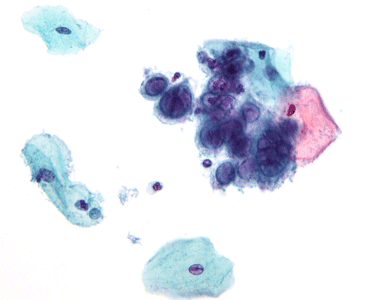New worldwide estimates for herpes simplex virus type 2 published

New global estimates for herpes simplex virus type 2 show that over 400-million people worldwide were infected with the virus in 2012. The estimates underline the extent to which herpes simplex virus type 2 – the virus which causes genital herpes – is widespread throughout the world causing a significant burden of disease. The research, led by University of Bristol academics and the World Health Organisation [WHO], is published in the journal PLOS ONE.
A global problem
The new study is the first update of global herpes simplex virus type 2 estimates, since estimates for 2003 were published in 2008. Lead author, Dr Katharine Looker from Bristol's School of Social and Community Medicine, said: "Approximately 19-million people are newly infected with the virus each year." More women are infected with the disease than men – in 2012, it was estimated that 267 million women and 150 million men were living with the infection. In 2012, prevalence was estimated to be highest in Africa (31.5 per cent) followed by the Americas (14.4 per cent), but high rates were seen across all regions, making herpes a global public health concern.
Effects of infection
Herpes simplex virus type 2 is mainly sexually transmitted, and can cause genital ulcer disease, which is characterised by the occasional appearance of painful genital ulcers. People infected with genital herpes can often experience feelings of stigmatisation and loneliness. Dr Lori Newman, WHO expert on sexually transmitted infections, and senior author of the study, added: "Genital herpes can have a devastating effect on the social and psychological wellbeing of people who are infected."
Genital herpes can also cause neonatal herpes when the virus is transmitted by a mother to a newborn baby during labour through shedding of the virus. Whilst this is a relatively rare disease, it has devastating consequences, and is often fatal for the baby.
Herpes type 2 and HIV
Herpes simplex virus type 2 is of particular concern due to its relationship with HIV. Studies have shown that people who are infected with herpes simplex virus type 2 are approximately three times more likely to become infected with HIV, and people with both HIV and herpes are more likely to spread HIV to others. In addition, infection with herpes simplex virus type 2 in people living with HIV often has a more severe presentation and can lead to serious but rare complications such as brain, eye, or lung infections.
Prevention is crucial
There is no cure for herpes, but there are antiviral medicines, such as acyclovir, famciclovir and valacyclovir which can reduce symptoms. The authors of the study underline their hope that the new global estimates will help to advocate and provide support for research and efforts to help prevent infection.
More information: Looker KJ, Magaret AS, Turner KME, Vickerman P, Gottlieb SL, et al. (2015) "Global Estimates of Prevalent and Incident Herpes Simplex Virus Type 2 Infections in 2012." PLoS ONE 10(1): e114989. DOI: 10.1371/journal.pone.0114989

















